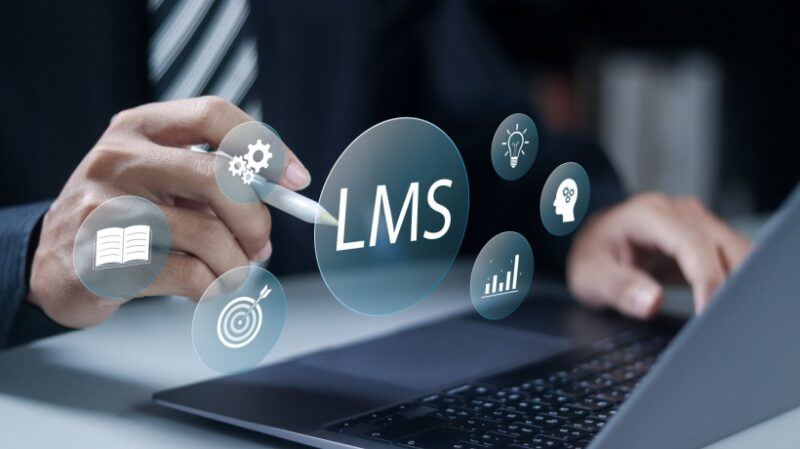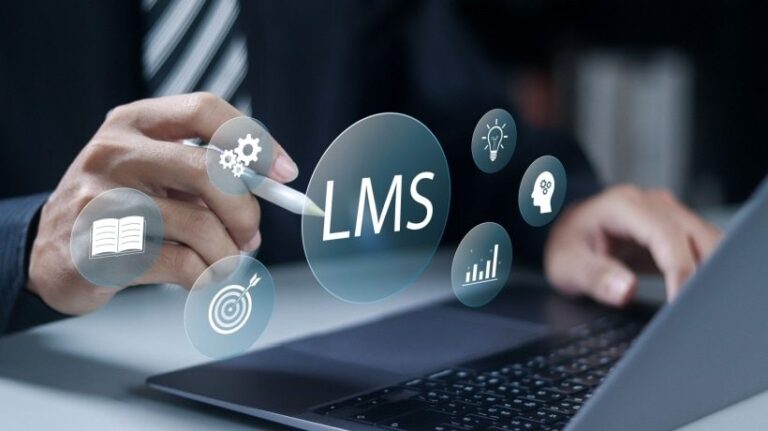
Is LMS short for education?
In today’s digital age, education is rapidly evolving, and technology plays a central role in this transformation. The Learning Management System (LMS) is one of the most important tools to drive this change. Much more than buzzwords, LMS provides a centralized platform for delivering, managing and tracking educational content.
The LMS platform promotes communication, supports both online and blended learning, and provides flexibility to the needs of a diverse student. Educators can also personalize their learning paths, provide real-time feedback, and monitor student progress. By automating tasks such as grading and attendance tracking, LMS reduces administrative burden and enables more efficient teaching and learning processes.
Sponsored content – Article continues below
Trend Learning Management System (LMS)
Understanding LMS: Definition and Core Concepts
At its heart, LMS is software that organizes and delivers courses and training programs. It serves as a hub for teachers and students to access materials such as lessons, assignments, and assessments. Typically, the main components include:
Course Management
Structure and provision of content user management
Handling roles, permissions, and account content management
Support Text, Video, Audio, and Interactive Format Evaluation Tool
Quiz, Test, and Automated Grading Communication Tools
Forums, chat, and messaging systems
The latest LMS platform also provides analytics that tracks performance and integrates learning with other educational technologies, creating connected ecosystems of virtual classrooms, digital libraries and evaluation systems.
The evolution of LMS in education
The early LMS platforms were primarily repositories of static course materials. Over time they evolved with important milestones such as:
Early 2000s
Basic content distribution for the late 2000s
Introducing Interactive Tools and Multimedia 2010S
Cloud-based solutions and mobile-friendly designs exist
AI-driven personalization and adaptive learning
Today’s LMS platforms are essential for digital learning environments around the world as they emphasize interaction, accessibility and scalability.
Key features of the latest LMS platform
The latest LMS platforms are designed to meet a variety of educational needs. Common features include:
Intensive course management. Flexible content delivery across multiple formats. Automatic evaluation using instant feedback. Communication and collaboration tools. Analysis to track participation and outcomes. Mobile compatibility for on-the-go access.
These features support both synchronous (real-time) and asynchronous (self-paced) learning, ensuring inclusiveness in a variety of learning settings.
Types of LMS in Education
Different types of LMS meet a variety of institutional needs:
Cloud-based LMS
Scalable and accessible anywhere from open source LMS
Customizable, but requires a self-hosted LMS with technical expertise
Data Commercial LMS is managed locally with more control
Subscription-based with vendor support and regular updates
Institutions typically select systems based on budgets, technical resources, and specific educational requirements.
Learn to integrate with educational technology
The LMS platform integrates seamlessly with other digital tools to enhance the overall learning experience. An example is:
Virtual classrooms for real-time interaction. Digital library for resource access. Evaluation tools for various evaluation methods. Student Information Systems for rationalized data management.
This integration creates a more interactive, data-driven cohesive ecosystem with more interactive learning.
Benefits of using LMS for education
The benefits of LMS adoption have been extended to both educators and students.
Flexibility
Supports self-paced and real-time learning efficiency
Reduce physical resource dependency and automate task engagement
Interactive tools promote collaboration and participation accessibility
Mobile Access helps you learn data insights anytime, anywhere
Analytical Guide Guides Educational Strategies and highlights the security of learning gaps
Robust protocols protect sensitive academic data
Overall, the LMS platform allows educators to focus on education while improving the quality of their learning outcomes.
Enhance student engagement and personalized learning
LMS tools such as discussion boards, quizzes and simulations encourage active participation. By tracking progress, these systems adapt learning paths to suit individual needs, ensuring the inclusiveness of diverse learning styles. Personalized learning improves motivation and outcomes, while peer collaboration builds community within digital classrooms.
LMS for Educators: Management Management
For educators, LMS simplifies course organization, grading, and attendance tracking. Communication tools allow you to easily share updates and connect with students and parents. Automating administrative tasks allows educators to focus more on mentoring and student engagement.
General features of LMSS and educational platforms
Several features are provided by learning management systems and other educational platforms. AI-powered education platforms can combine LMS and ERP capabilities to provide integrated academic and management tools for institutions. Open source LMSS has high customization and can provide community support. It allows for a user-friendly interface with powerful integration features and excellent support for a variety of educational tools.
Robust features are available with a wide range of tools for evaluation, collaboration and analysis. There is a simple, accessible system that integrates well with the Google Workspace ecosystem and is perfect for your K-12 environment. LMS features can be combined with social and collaboration tools. Powerful adaptive learning capabilities and support for mobile learners are available. Each platform offers its own advantages, and institutions must evaluate options based on scalability, budget, and specific learning goals.
Implementation strategies and challenges
A successful LMS implementation requires:
Assessment of institutional needs. Key stakeholders will be involved. Provides thorough training. Regular reviews and feedback collection.
Challenges include ensuring data security, maintaining privacy compliance, and providing an accessible learning experience for all students.
The future of LMSS in education
New innovations continue to form the LMS platform.
Mobile-first design for virtual and augmented reality flexible access for AI-driven personalized immersive simulations for tailored learning
These trends illustrate a future in which LMS platforms offer increasingly sophisticated, comprehensive and engaging learning opportunities.
Learning management systems have redefine modern education. It serves as the basis for educational technology by streamlining management, enabling personalized learning and promoting engagement. With continuous innovation, the LMS platform is at the heart of shaping flexible, data-driven, accessible learning environments around the world.
edu
EDU is an AI-driven LMS & ERP platform that streamlines the engagement of schools, universities, and university academics, management and students, providing cloud-based real-time access.


